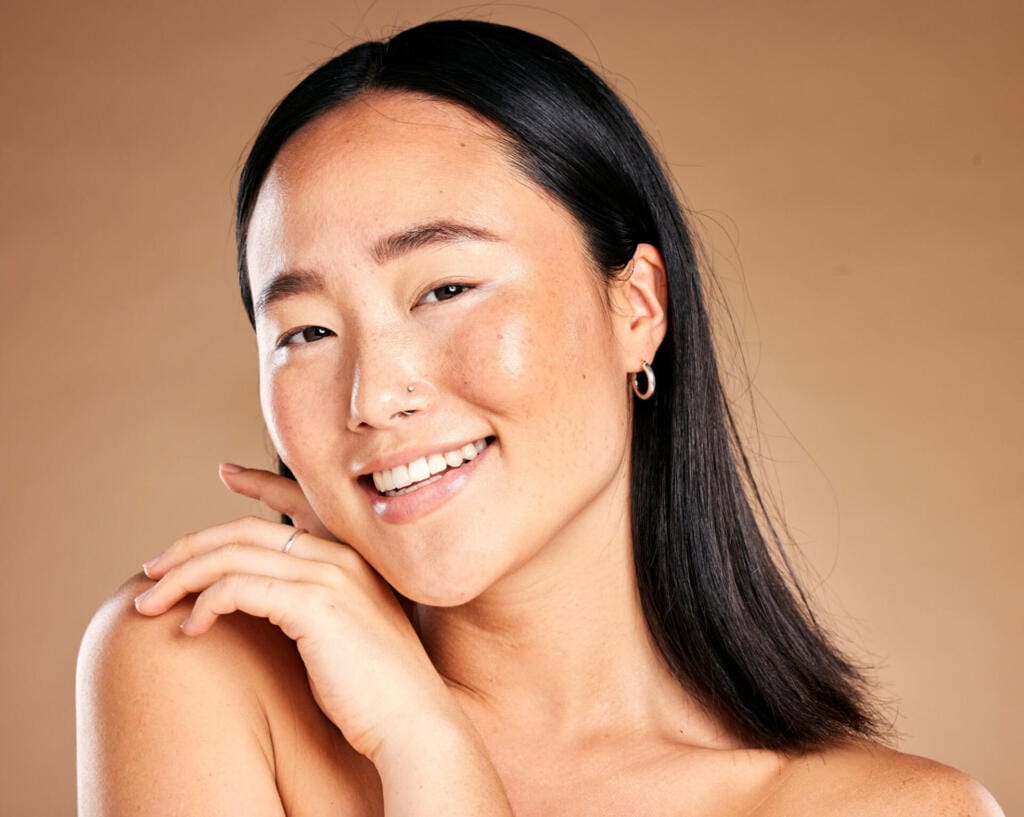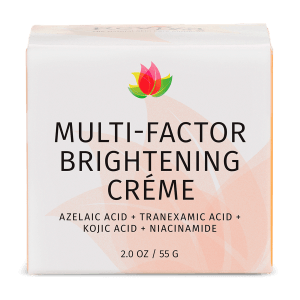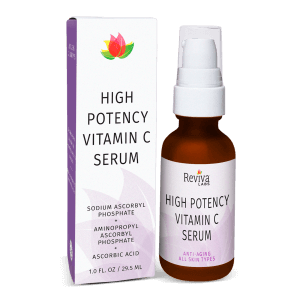When it comes to skincare, an even skin tone often stands out as a defining element of beauty and health. A radiant, consistent complexion can boost confidence and give the impression of youthfulness, while uneven skin tone can feel like an obstacle to a naturally flawless appearance. But what exactly causes those darker spots, redness, and irregular patches that so many of us face? It turns out, there’s a fascinating mix of factors behind uneven skin tone and understanding these causes can be your first step toward brighter, more balanced skin.
In fact, studies show that 40% of people are affected by some form of hyperpigmentation in their lives, with sun exposure being the biggest trigger. While some cases stem from genetics, others arise from lifestyle choices or environmental factors. For many, addressing these triggers can open up possibilities for clearer, healthier skin.
Sun Exposure: The Biggest Culprit
When we think about uneven skin tone, sun exposure is often the first culprit that comes to mind, and for good reason. Ultraviolet (UV) radiation from the sun triggers melanin production in the skin as a natural defense mechanism. While melanin helps protect against DNA damage, overproduction in localized areas can lead to sunspots and dark patches.
This process is called hyperpigmentation. UV rays stimulate melanin-producing cells, known as melanocytes, to go into overdrive. Even those quick daily trips to the grocery store or occasional outdoor lunch can add up over time. Worse, without adequate sunscreen protection, sun damage tends to accumulate, leaving behind lasting marks.
Hormonal Changes: A Major Player in Skin Tone Shifts
Hormones are powerful regulators in our bodies, impacting everything from mood to metabolism. They’re also key players when it comes to skin tone. Pregnancy, birth control pills, and hormone replacement therapies can all lead to a condition known as melasma, a form of hyperpigmentation commonly seen as large, dark patches on the face.
Melasma, often called the “mask of pregnancy,” is one of the most stubborn types of hyperpigmentation. Its direct cause remains unclear, though hormonal changes combined with sun exposure tend to be the primary triggers. Unfortunately, even after the hormones stabilize, melasma can be persistent, requiring dedicated skincare routines and sometimes dermatological intervention.

Aging and Cellular Turnover: Slower with Time
As we age, our skin doesn’t renew itself as swiftly as it once did. Younger skin typically goes through a regeneration cycle every 28 days, but by the time we reach our 30s and 40s, this cycle begins to slow. Dead skin cells that were once quickly sloughed off start to linger, leading to a duller appearance and uneven tone.
Alongside this natural slowdown, collagen production decreases, and the skin’s ability to retain moisture weakens. Fine lines, wrinkles, and age spots emerge, all contributing to a less uniform skin tone. To combat this, many dermatologists recommend treatments like chemical exfoliants or retinoids, which can help speed up the turnover process and reveal fresher skin underneath.
Inflammation and Post-Inflammatory Hyperpigmentation
Sometimes, uneven skin tone results from an inflammatory response rather than external factors like the sun. If you’ve ever noticed dark marks left behind after a breakout or injury, you’ve experienced post-inflammatory hyperpigmentation (PIH). This type of pigmentation occurs when skin trauma triggers melanin production as part of the healing process.
PIH can be challenging because it affects all skin types and is often stubborn to fade. In addition, those with darker skin tones are more prone to developing PIH because their skin naturally contains more melanin. While prevention is key—by avoiding picking at acne and using anti-inflammatory products—there are options for managing PIH after it occurs, including topical treatments with ingredients like vitamin C or niacinamide.
Environmental Pollution: A Sneaky Offender
Pollution isn’t just bad for our lungs—it can harm our skin too. Exposure to environmental pollutants like dirt, smoke, and free radicals can disrupt the skin’s natural barrier, leading to irritation, inflammation, and oxidative stress. Over time, these elements can degrade collagen and elastin, essential proteins that keep skin firm and youthful, resulting in uneven skin tone.
Skincare experts suggest antioxidant-rich products as a defense against pollution. Antioxidants neutralize free radicals, reducing their damaging effects on the skin. Look for skincare ingredients like vitamin C, E, or green tea extract, which work to combat oxidative stress and prevent damage at the cellular level.
Genetic Factors: The Role of Heredity
Sometimes, no matter how careful we are with sun protection and skincare routines, genetics play a role in uneven skin tone. If your parents or grandparents dealt with hyperpigmentation or other skin tone irregularities, you may be more prone to similar issues. Genetic predispositions can influence everything from how our skin reacts to sun exposure to the way it heals after an injury.
That said, genetic influences don’t mean you’re powerless against uneven skin tone. Knowing your genetic tendencies can guide you toward a skincare regimen that emphasizes protection, hydration, and gentle treatments tailored to your specific needs.
Lifestyle Choices: Sleep, Diet, and Stress
Believe it or not, our everyday habits—sleep, diet, and stress levels—can significantly impact skin tone. Poor sleep disrupts the skin’s natural repair cycle, making it more susceptible to unevenness and dullness. Diets high in sugar and processed foods can trigger inflammation, which in turn, may worsen skin tone issues like acne or redness.
Stress is another big player here. When we’re stressed, our bodies produce more cortisol, a hormone that can stimulate excess oil production and worsen skin inflammation. Simple lifestyle shifts, such as prioritizing quality sleep, staying hydrated, and incorporating whole foods rich in vitamins, can make a noticeable difference in our skin’s health and radiance.
Dehydration and Skin’s Barrier Function
Hydration is essential for an even complexion. When skin is properly hydrated, it appears plump, smooth, and radiant. But dehydration can lead to roughness, dullness, and uneven tone. When the skin lacks moisture, its barrier becomes compromised, leaving it vulnerable to external irritants and pollution.
Incorporating hydrating ingredients into your skincare routine—think hyaluronic acid, glycerin, and ceramides—helps maintain a strong, resilient barrier. Drinking enough water throughout the day can support this process from the inside out, keeping your skin soft, supple, and better equipped to resist external stressors.
Effective Treatments for Uneven Skin Tone
While prevention is ideal, there are numerous treatments available for managing and improving uneven skin tone:
- Topical Vitamin C: Known for its brightening properties, vitamin C can help fade hyperpigmentation and even out skin tone. It’s also a potent antioxidant, which makes it a great shield against environmental stressors.
- Niacinamide: This powerful ingredient works well for reducing redness and hyperpigmentation, making it a popular choice for those with sensitive skin.
- Exfoliation with AHAs and BHAs: Regular exfoliation with alpha hydroxy acids (AHAs) or beta hydroxy acids (BHAs) helps remove dead skin cells, revealing brighter skin underneath.
- Retinoids: Often hailed as the gold standard in anti-aging, retinoids accelerate cell turnover, helping reduce the appearance of dark spots and fine lines.
- Professional Treatments: For more stubborn cases, dermatological treatments like laser therapy, chemical peels, and microneedling can offer dramatic improvements in skin tone.
Uneven Skin Tone Solutions
Uneven skin tone is a multifaceted issue with many contributing factors, from sun exposure and hormones to lifestyle habits and pollution. However, with a targeted approach that combines preventive care, effective skincare ingredients, and potentially professional treatments, you can achieve a smoother, more balanced complexion. Remember, every step you take toward protecting your skin pays off in the long run—resulting in healthier, more radiant skin.










